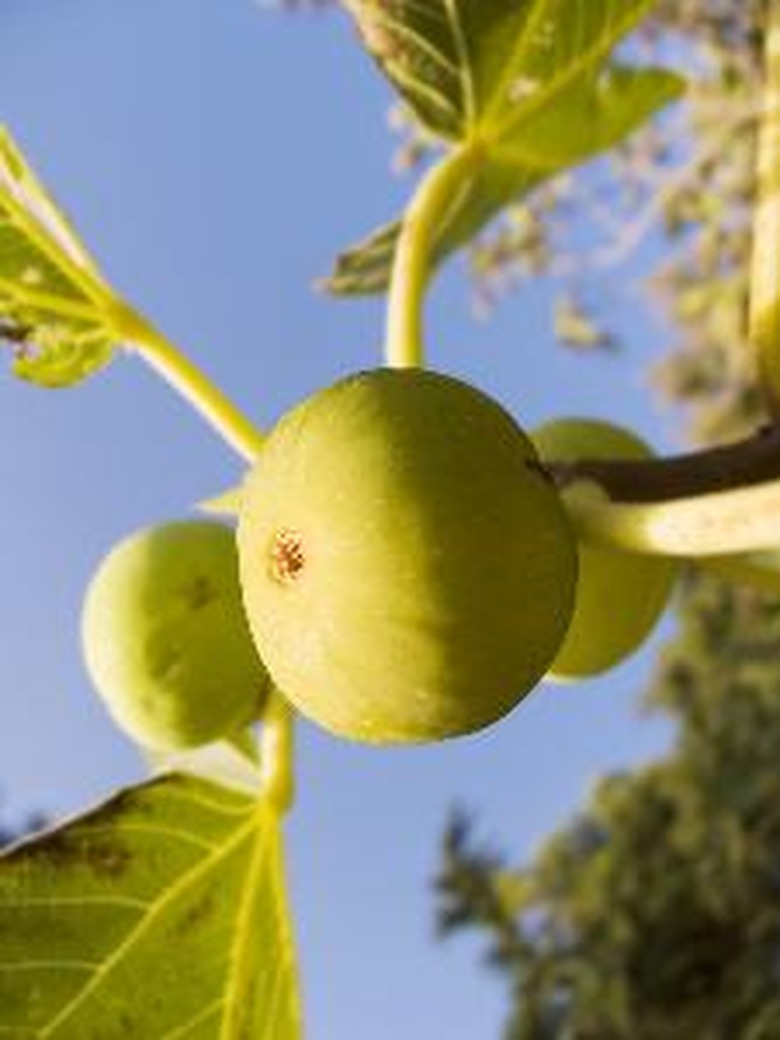What Fruit Trees Grow In Texas
If you live in the state of Texas and want to include some fruit trees in your yard, it's best to find out which trees and cultivars will thrive best in the state. Some fruit trees develop successfully depending on the region of Texas they're planted in, and each tree requires specific types of soil and sunlight exposure to produce delicious fruit.
Apple Trees
Apple trees thrive best in the eastern region of Texas; varieties like Gala, Golden Delicious and Red Delicious are common in the state. Golden Delicious and Red Delicious apples need full sun to grow, as well as soil that is well drained. The trees can grow between 20 and 25 feet in maturity, and have a spread of about the same size. Golden Delicious apples are light yellow in color and have a mellow taste, and Red Delicious apples are very sweet with a crisp texture; the tree's fruits ripen in the months of September and October. Gala apple trees are considerably smaller, and only reach 10 feet in height; the fruit is mildly sweet.
Fig Trees
Fig trees are common in central Texas, particularly the Texas Everbearing variety, which is also known as the Brown Turkey fig tree. The tree grows to be about 10 feet and must be in direct sunlight to thrive. The plant requires well-drained soil, but should ideally be planted in a protected area where it won't be affected by the winter frost. Figs appear on the tree all summer long (from June to August) and are a deep purple color. Brown Turkey fig trees are self-pollinating, so it's not necessary to plant a second tree if you want more than one plant in your yard.
Apricots
North central Texas is home to apricot trees, particularly the Bryan, Hungarian and Moorpark cultivars, according to Texas A&M University. The university also notes that it's best to plant bare-root apricot trees from January 1 to February 15; gardeners can plant container versions of the tree until March 31. The trees produce fragrant white blossoms with red or pink centers before the fruit appears; the fruit is orange or yellow and smooth to the touch. A number of these trees don't produce fruit very frequently — once every 3 to 5 years, according to the Texas A&M Horticulture Department. It's best to plant the tree in a place where the fruit won't be affected by early spring freezes.
Persimmons
Persimmons will grow just about anywhere in Texas; the leaves of the tree are not overly prone to pests and diseases, making them great for amateur gardeners. The fruits are ripe for eating during the fall, and are a healthy source of vitamin A, according to Texas A&M University. Varieties of persimmon trees include the Fuyu, which has flat, reddish fruit; it will thrive best in warmer areas of Texas, since it is easily affected by freeze damage. The Tane-nashi persimmon tree bears orange, seedless fruit in the shape of a cone and is an attractive landscape plant.
